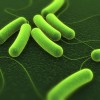Good Agricultural Practices (GAP) and Good Handling Practices (GHP) are voluntary audits that verify fruits and vegetables are produced, packed, handled, and stored as safely as possible to keep the risks of microbial food safety hazards at the minimal level. Good Agricultural Practices usually deal with preharvest practices (i.e., in the field), while GHPs cover postharvest practices, including packing and shipping. This 3-page fact sheet in the Food Safety on the Farm series covers GAPs and GHPs relating to traceback, or the ability to track food items, such as fresh produce, back to their source. This major revision was written by Jaysankar De, Christopher R. Pabst, Alexandra S. Chang, Renée M. Goodrich-Schneider, and Keith R. Schneider and published by the UF/IFAS Food Science and Human Nutrition Department.
http://edis.ifas.ufl.edu/fs152
Tag: Alexandra Chang
Preventing Foodborne Illness: Clostridium botulinum
 Clostridium botulinum is ubiquitous in nature, often found in soil and water. The bacteria and spores alone do not cause disease, but they produce the botulinum toxin that causes botulism, a serious paralytic condition that can lead to death. Although it is one of the least common of the foodborne diseases, anyone is susceptible even with the ingestion of only a small amount of toxin present in contaminated food. Immunocompromised individuals, young children, and elderly individuals may suffer from more serious symptoms. This 6-page fact sheet was written by Keith R. Schneider, Rachael Silverberg, Alexandra Chang and Renée Goodrich Schneider, and published by the UF Department of Food Science and Human Nutrition, December 2014.
Clostridium botulinum is ubiquitous in nature, often found in soil and water. The bacteria and spores alone do not cause disease, but they produce the botulinum toxin that causes botulism, a serious paralytic condition that can lead to death. Although it is one of the least common of the foodborne diseases, anyone is susceptible even with the ingestion of only a small amount of toxin present in contaminated food. Immunocompromised individuals, young children, and elderly individuals may suffer from more serious symptoms. This 6-page fact sheet was written by Keith R. Schneider, Rachael Silverberg, Alexandra Chang and Renée Goodrich Schneider, and published by the UF Department of Food Science and Human Nutrition, December 2014.
http://edis.ifas.ufl.edu/fs104
Preventing Foodborne Illness: E. coli O157:H7
 Escherichia coli is a bacterium found in the digestive system of healthy humans and animals and transmitted through fecal contamination. There are hundreds of known E. coli strains, with E. coli O157:H7 being the most recognized. This enterohemorrhagic E. coli (or EHEC) strain is responsible for an estimated 63,153 cases of infection and 20 deaths in the United States annually, and causes approximately $255 million in losses each year. E. coli are found everywhere in the environment but mostly occupy animal surfaces and digestive systems, making it important to thoroughly wash anything that comes into contact with these surfaces. This 5-page fact sheet was written by Keith R. Schneider, Renée Goodrich Schneider, Michael A. Hubbard, and Alexandra Chang, and published by the UF Department of Food Science and Human Nutrition, October 2013.
Escherichia coli is a bacterium found in the digestive system of healthy humans and animals and transmitted through fecal contamination. There are hundreds of known E. coli strains, with E. coli O157:H7 being the most recognized. This enterohemorrhagic E. coli (or EHEC) strain is responsible for an estimated 63,153 cases of infection and 20 deaths in the United States annually, and causes approximately $255 million in losses each year. E. coli are found everywhere in the environment but mostly occupy animal surfaces and digestive systems, making it important to thoroughly wash anything that comes into contact with these surfaces. This 5-page fact sheet was written by Keith R. Schneider, Renée Goodrich Schneider, Michael A. Hubbard, and Alexandra Chang, and published by the UF Department of Food Science and Human Nutrition, October 2013.
http://edis.ifas.ufl.edu/fs097
La Seguridad en la Produccion de Alimentos en la Granja: Buenas Practicas Agricolas y Buenas Practicas de Manejo series
 Las Buenas Prácticas Agrícolas (BPA) y las Buenas Prácticas de Manejo (BPM) abarcan los procedimientos generales que los productores, empacadores y procesadores de frutas y verduras frescas deben seguir para garantizar la seguridad de sus productos. Las BPA son usadas antes de la cosecha (es decir, en el campo), mientras que las BPM se utilizan luego de la cosecha, incluyendo el empaque y envío. Esta serie se centra en aspectos específicos del programa de BPA y cómo se relacionan con los cultivos y las prácticas de la Florida.
Las Buenas Prácticas Agrícolas (BPA) y las Buenas Prácticas de Manejo (BPM) abarcan los procedimientos generales que los productores, empacadores y procesadores de frutas y verduras frescas deben seguir para garantizar la seguridad de sus productos. Las BPA son usadas antes de la cosecha (es decir, en el campo), mientras que las BPM se utilizan luego de la cosecha, incluyendo el empaque y envío. Esta serie se centra en aspectos específicos del programa de BPA y cómo se relacionan con los cultivos y las prácticas de la Florida.
This series of fact sheets was written by Federico G. Caro, Alexandra Chang, Renée Goodrich-Schneider, y Keith R. Schneider, and published by the UF Department of Food Science and Human Nutrition, February 2013.
http://edis.ifas.ufl.edu/topic_series_spa_food_safety_on_the_farm
- Sanidad en las Instalaciones de Empaque (FSHN1205S/FS219)
http://edis.ifas.ufl.edu/fs219 - Salud e Higiene de los Trabajadores (FSHN1010S/FS220)
http://edis.ifas.ufl.edu/fs220 - Sanidad en el Campo (FSHN1012S/FS221)
http://edis.ifas.ufl.edu/fs221
Food Safety on the Farm series
 These brief fact sheets are part of a collection that reviews the generally recognized principles of GAPs as they relate to produce, primarily at the farm level and with particular focus on fresh Florida crops and practices. Written by Keith R. Schneider, Renée M. Goodrich-Schneider, and Alexandra Chang, and published by the UF Department of Food Science and Human Nutrition, March 2012.
These brief fact sheets are part of a collection that reviews the generally recognized principles of GAPs as they relate to produce, primarily at the farm level and with particular focus on fresh Florida crops and practices. Written by Keith R. Schneider, Renée M. Goodrich-Schneider, and Alexandra Chang, and published by the UF Department of Food Science and Human Nutrition, March 2012.
- Worker Health and Hygiene (FSHN1010/FS158)
http://edis.ifas.ufl.edu/fs158 - Sanitary Facilities (FSHN1011/FS159)
http://edis.ifas.ufl.edu/fs159 - Field Sanitation (FSHN1012/FS160)
http://edis.ifas.ufl.edu/fs160 - Packing Facility Sanitation (FSHN1205/FS189)
http://edis.ifas.ufl.edu/fs189
FSHN10-03/FS151 Food Safety on the Farm: Good Agricultural Practices and Good Handling Practices – Transportation
FSHN10-03, a 2-page fact sheet by Alexandra Chang, Alina Balaguero, Renée Goodrich-Schneider, and Keith R. Schneider, is part of the Food Safety on the Farm series and describes the best practices for transporting produce to avoid microbial infections, cross-contamination, and other possible hazards. Includes references. Published by the UF Department of Food Science and Human Nutrition, June 2010.
http://edis.ifas.ufl.edu/fs151
FSHN10-04/FS152 Food Safety on the Farm: Good Agricultural Practices and Good Handling Practices – Traceback
FSHN10-04, a 3-page fact sheet by Alexandra Chang, Alina Balaguero, Renée Goodrich-Schneider, and Keith R. Schneider, is part of the Food Safety on the Farm series and discusses the need for traceback requirements to identify and eliminate sources of microbial hazards, outbreaks, and food contamination. Includes references. Published by the UF Department of Food Science and Human Nutrition, June 2010.
http://edis.ifas.ufl.edu/fs152
FSHN10-02/FS150 Food Safety on the Farm: Good Agricultural Practices and Good Handling Practices—Manure and Municipal Biosolids
FSHN10-02, a 4-page fact sheet by Keith R. Schneider, Renée Goodrich-Schneider, and Alexandra Chang, is part of the Food Safety on the Farm series. It focuses on GAPs and GHPs relating specifically to manure and municipal biosolids. Includes references. Published by the UF Department of Food Science and Human Nutrition, May 2010.
http://edis.ifas.ufl.edu/fs150
FSHN031/FS097 Preventing Foodborne Illness: E. coli O157:H7
Revised! FSHN-03-1, a 5-page fact sheet by Keith R. Schneider, Renée Goodrich Schneider, Michael A. Hubbard, and Alexandra Chang, discusses the common foodborne pathogen E. coli O157:H7, especially as it concerns food handlers, processors and retailers. Includes references. Published by the UF Department of Food Science and Human Nutrition, November 2009.
http://edis.ifas.ufl.edu/FS097
